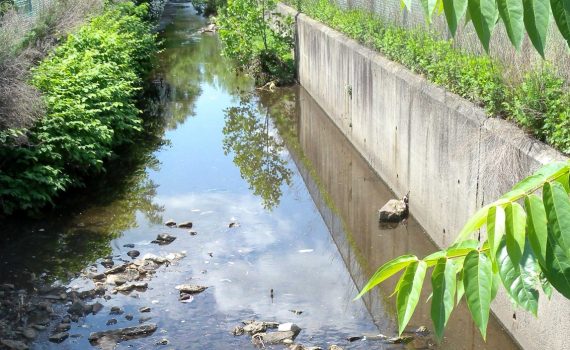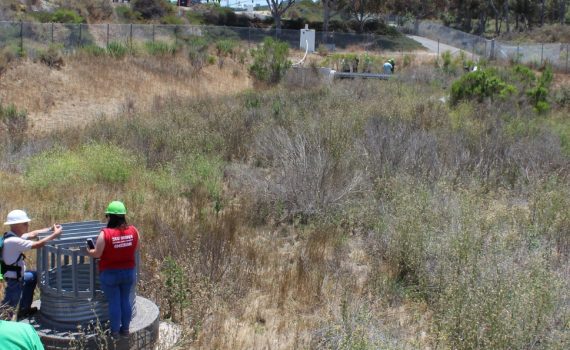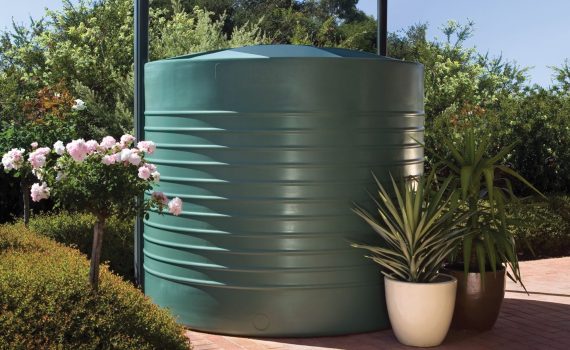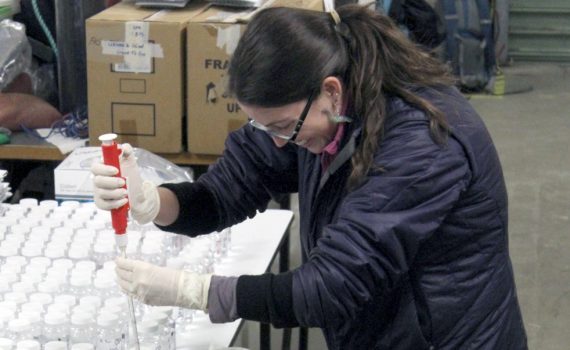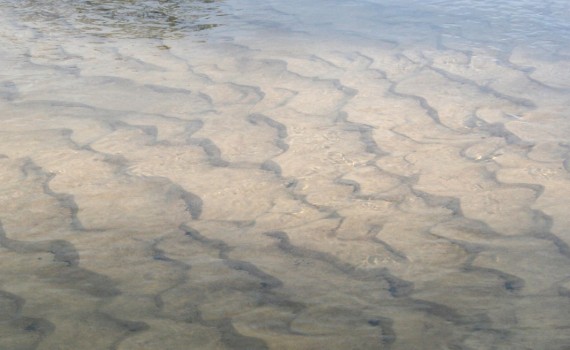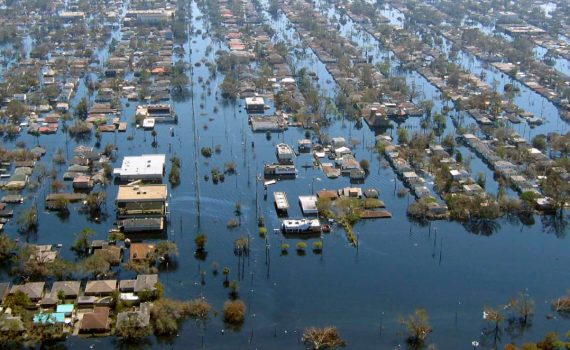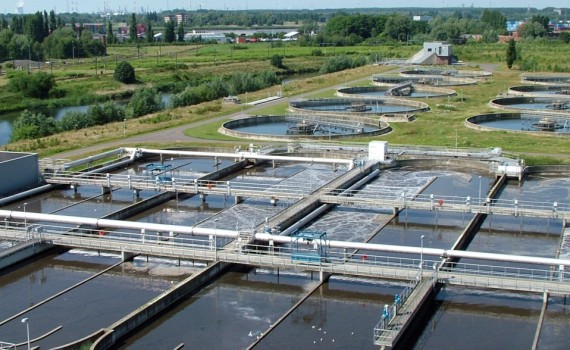By Kevin Wilcox
Distributed, green technologies to divert excessive stormwater flows from urban streams are common in many parts of the world, but the U.S. has been slow to adopt them. November 3, 2015—As urban areas have increased in density and sprawled outward over the past decades in the United States, the extensive conversion of green spaces into impervious surfaces, coupled with the infrastructure installed to manage stormwater flows, have created a growing problem known as urban stream syndrome. During heavy rain events, urban streams experience exceptionally high flows of contaminated water-but nearly run dry at other times.
featured image A canal that once connected California reservoirs to agricultural land now lies all but dry, as do many water sources that have fallen prey to urban stream syndrome. Low-impact development and strategies for capturing and reusing stormwater can help solve the problem new research reveals.
In drought-stricken California, a research team from three campuses of the University of California recently collaborated with practioners from government and colleagues at the University of Melbourne to learn more about low-impact development (LID) strategies to restore urban watersheds to a more natural balance.
“Urban stream syndrome is seen in all urban areas, but the character varies based on climate,” says Stanley B. Grant, Ph.D., A.M.ASCE, a professor of civil engineering at the University of California, Irvine. “The challenge we face in Southern California is that we get a lot of runoff in a fairly short period of time in the winter. [We have] huge volumes of water hitting the ground.
“Historically we’ve dealt with this excess water by making our drainage system hydraulically efficient and moving as much water to the ocean as quickly as possible—which was a reasonable response to the problem,” he explains. “It made sense when we started doing that back in the early 1900s.”
But with California in the grip of an extended drought, this strategy requires reconsideration. If cities can find ways to capture and reuse that stormwater, they will have created a new source of water to help offset droughts. “The problem is that we’ve developed a system that is now intrinsic to the urban fabric. Our challenge is to somehow unwind that with distributed green infrastructure—and that’s not trivial,” Grant says.
The LID technologies that the team studied, already used extensively in Melbourne, include roof catchment systems that feed water into large tanks, permeable pavement and unlined biofilters that can recharge underground aquifers, and green roofs that reduce the amount of water that ultimately enters urban streams.
“The optimal technologies are going to be very climate- and location-specific, but they are out there,” says Grant, who notes that some areas of the U.S. East Coast could benefit greatly from individual roof catchment systems, whereas California would likely need to utilize larger underground storage. “The emphasis is really on distributed systems,” Grant says. “That’s a common denominator—as opposed to the approach we have been taking in the engineering community, [which is] very focused on centralized systems.”
The team recently published a critical review of LID technologies and the growing body of research on them in the journal Environmental Science & Technology. Grant is the corresponding author of the review, “From Rain Tanks to Catchments: Use of Low-Impact Development to Address Hydrologic Symptoms of Urban Stream Syndrome,” which was funded by a grant from the National Science Foundation.
The team examined an environmental flow-management approach to alleviate the causes of urban stream syndrome. As cities grew, green spaces that facilitated both infiltration of water into aquifers and evapotranspiration of water into the atmosphere were replaced by pavement and hard surfaces that dramatically increased flow into urban streams.
In the environmental flow-management approach, researchers determine how a watershed would have functioned in preindustrial times. They then develop a plan to take the additional water that now flows through the stormwater system and allocate it to LID interventions.
The review notes that although many countries use captured stormwater for such in-home functions as toilet flushing or laundry, in most areas of the United States those types of applications are forbidden by plumbing codes or regulations. Public resistance also plays a role.
“There are legitimate concerns, which can lead to inaction instead of solutions,” Grant says. “Some of those relate to concerns over cross-connections. If you have an amateur plumber doing a redesign they could inadvertently connect the rainwater tank to the water supply line and lead to contamination.”
Still, he points out, other areas of the world have found that public education campaigns and construction inspections have alleviated those concerns. In Australia, for instance, rainwater harvesting is a $500-million industry; 5.1 million residents own a rainwater tank, according to the Rainwater Harvesting Association of Australia.
“From an engineering perspective though, there are some clear things we can do as engineers,” Grant points out. “We’ve done a great job developing technology and the engineering science to design centralized infrastructure. Our ideas are used around the world and are the dominant way of servicing the water supply needs of cities. We need to exert the same intellectual leadership for green infrastructure. I think the engineering sciences are not there yet. We need to get the engineering science right, now.”
Grant also believes engineers can add value by collaborating with biologists to develop effective and long-lasting biofilters and by collaborating with social scientists and urban planners to determine and help to alleviate the causes of public resistance to LID interventions.
The team’s next research effort will do just that. Grant plans to bring together his students and colleagues with the many stakeholders in Orange County, California—consultants, stormwater managers, lawyers, public health officials—to determine the barriers to larger-scale adoption of LID strategies there.
“I think it’s going to be a great learning experience for everybody,” Grant says.


